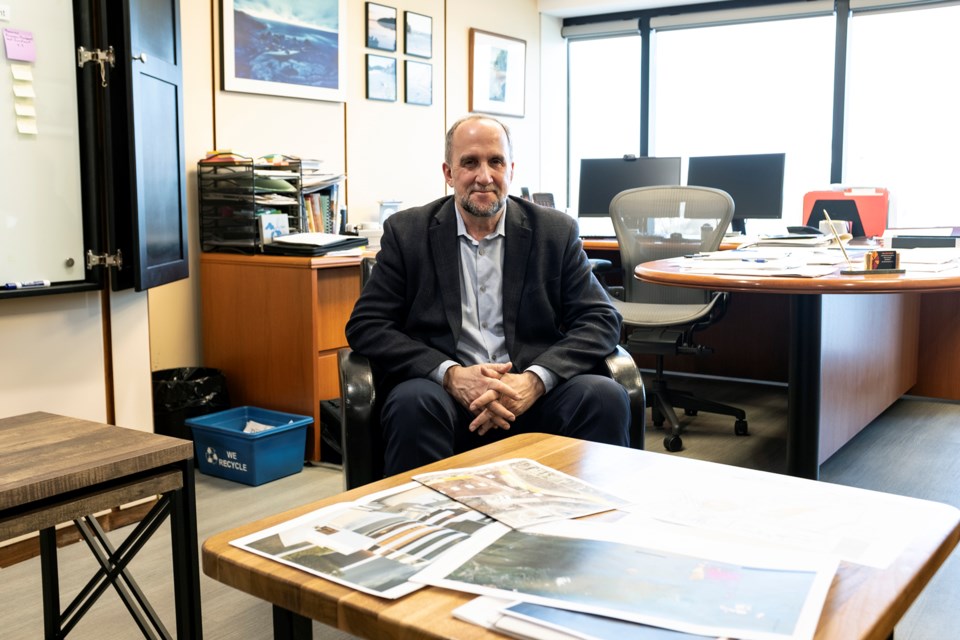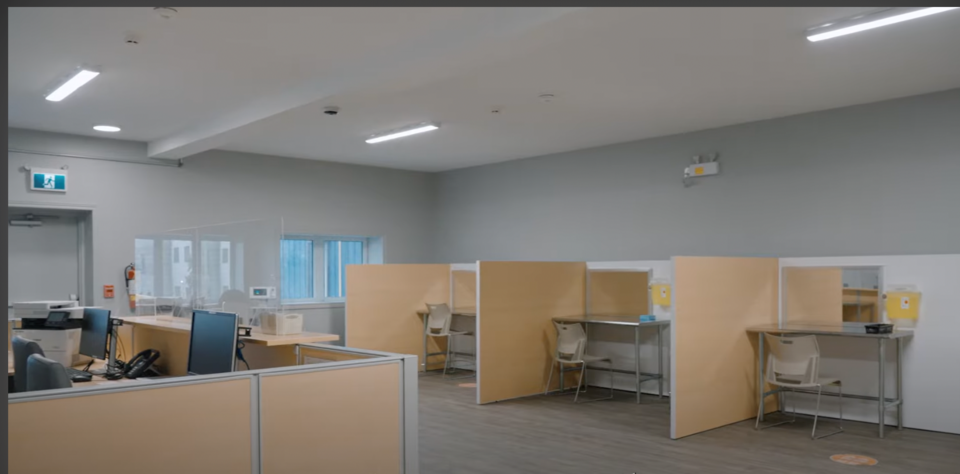An effort to deliver a Supervised Consumption and Treatment site to Sault Ste. Marie is still in the planning stages, but the city’s lead for the project says it is imperative to gather as much information as possible from the other communities that have already opened one in order to get it right.
“I think you would be hard-pressed to find any family in Sault Ste. Marie that has not been touched by mental health and addictions challenges and unfortunately often touched in a tragic way,” said city CAO Malcolm White, who is leading the initiative. “I think there is a good community understanding that things need to be done and things need to change.”
Delivering health care is the responsibility of the provincial government, not municipalities, but across Ontario a number of cities have taken on the funding of a Supervised Consumption Site in their community to fill the gap.
“Other communities like Timmins and Sudbury have started them up,” White said about the trend of municipalities funding safe consumption sites. “That is because of the difficulty of the permitting process on both the federal and provincial levels and the challenge of getting operational funding for them and of getting one-time startup funding for them.”
The first approved supervised consumption sites started opening in 2017 and 2018. Those initial sites were approved under the previous Liberal provincial government, with an exemption provided by Health Canada under the Controlled Drugs and Substances Act.
Since then, similar sites have opened in communities across Ontario. In total, 24 supervised consumption sites are currently operating in the province — but not yet in the Sault.
“There is no one cookie cutter approach to developing this, both in what the facility looks like and what it does and how it’s staffed,” White said.
In recent years, northern Ontario communities have endured greater-than-average opioid mortality rates as the range of services for addiction treatment and harm reduction has lagged behind what is available in southern Ontario.
According to the latest statistics released by the Office of the Chief Coroner, Sault Ste. Marie recorded the third-highest opioid death rate in the province for the year 2022, behind only Thunder Bay and Sudbury.
As Sault Ste. Marie moves through the process of building an application for its eventual site, White said it is important to learn as much as possible from the communities that already operate one.
“We have talked to the other northern Ontario communities — Sudbury, Timmins and Thunder Bay — and we have talked about approaches that have been taken elsewhere in southern Ontario and Ottawa,” he said.
White said the eventual site will likely be a made-in-Sault Ste. Marie solution that will take the best aspects that have worked elsewhere and marry them with the strong partnerships that already exist within the local agencies already on the front lines of the opioid crisis.
“It’s well understood that it needs to be a part of the solution here, so it is very important to get it right because there isn’t a lot of room for error, in my view, in setting it up and getting it operating and it needs a lot of partners,” said White.
He stressed that a safe consumption site is only a part of an overall solution to the opioid crisis affecting the city.
“It is a small piece of addressing the challenges of mental health and addictions, but it’s certainly not a silver bullet in and of itself,” said White.
In Timmins, the community’s temporary supervised consumption site was launched last summer with one-time funding and operational funding from the city, while the actual operation of the site is overseen by the Timmins and District Hospital.
In January, Timmins City Council approved operating funding of the site, at a cost of $85,833 per month, with hopes the province will reimburse that amount once permanent funding is secured.
An application for a more permanent Timmins site is in the works, with CMHA Cochrane-Timiskaming acting as lead agency for that application.
Safe Health Site Timmins looks like any other clinic offering health care, said Patrick Nowak, Addictions and Outpatient Mental Health Programs manager with Timmins and District Hospital.
“You walk in, there is a waiting area, there’s a treatment room off to the side,” Nowak told SooToday. “If people were to walk through I think they would be like: 'Oh, okay. It’s very clinical.’”
The intention is to offer a medical intervention to address a medical problem, said Nowak.
“It’s for people who are using their substances intravenously, orally or nasally and there is a little post-consumption space. It all takes place basically in one big room under the supervision of nurses and harm reduction workers,” said Nowak. “At the end of the day, it’s nurses administering oxygen and Naloxone if an overdose happens.”
Nowak said there has not been a single death at the site since it began operating in July.
When there is an overdose at the site, it is generally reversed by the on-site staff using Naloxone. Nowak said paramedics are rarely called to the site.
In March, a total of 2,559 visits were made to the site, with 25 overdoses recorded. None of those overdoses required a call to EMS.
“We are saving those resources, at least from a paramedicine perspective, so they can respond to other calls that aren’t overdoses, necessarily,” he said. “Our nurses are doing really well, keeping people safe at the site and saving resources in the community at the meantime.”
While attending the site, clients can be offered counselling and harm reduction education, as well as basic medical care.

Those additional services will be important for the eventual Sault Ste. Marie site, said White. He sees there is an opportunity not only to keep people safe while they are using, but also offer clients services that can help them to enter treatment.
“I think one of the real benefits of it is having another touch point for people to enter treatment,” said White. “Right now that entry point is just showing up at emerg at Sault Area Hospital and [they] are obviously challenged in all facets of primary health care.”
“It’s a point of initial contact for treatment to develop a relationship with the clientele and help them to access all of the other treatment programs they need to access,” he added.
City staff is currently in discussions with a number of local agencies that work with people affected by mental health and addictions challenges, including Algoma Public Health, Sault Area Hospital, CMHA Algoma, Willow Addiction Services and Social Services, among others.
White said at this point in the process, no location has been identified for the eventual safe consumption site and an operator agency for it has not yet been determined.
“I think there is certainly an understanding that we need the facility and we need it located where it can get its maximum benefit of use and, in my mind, the problems that would be perceived as being associated with the location of a safe consumption and treatment site are problems that we already experience, so I don’t think there are going to be any greater problems associated with it,” said White.
Once a proposed site is identified, White said a public consultation process will begin.
“All of the stakeholders I have talked to see the importance of it and the need for it," he added. "What we are all struggling with a bit is how we can resource it, financially and especially with human resources."
